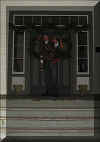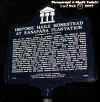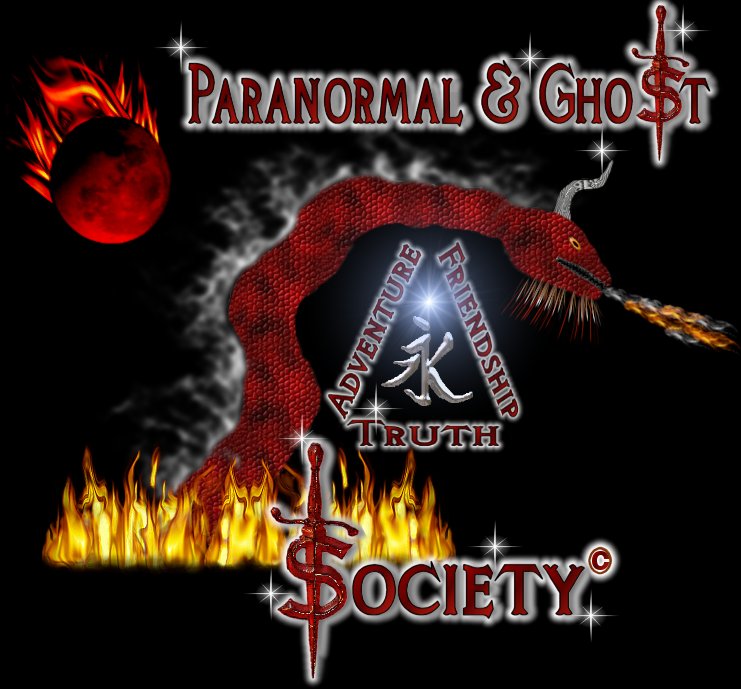| |



In 1854 Thomas Evans Hail and his wife, Esther
Serena Chestnut Haile, and their five Children, arrived in Alachua County,
Florida from Camden South Carolina. They established a 1,500 Sea Island
Cotton plantation. The home was named Kanapaha, Indian for "small
thatched houses" The house had 6,200 square feet and was built of
heart pine and cypress. A braced frame construction, mortise, and tenon
joinery were used. By 1856 the house was completed by slaves of Thomas
Haile.
Both Thomas and Serena Haile died in the 1890s
leaving the property to Evans Haile the 14th of their 15 children. Evans
was a promiment defense attorney who lived in the Duck Pond area of
Gainesville. On the weekends or holidays, he would entertain his friends
and family members at the historic homestead. Their were many parties,
hunts and even dances. I suppose over the years many of the walls had
writing from various guest who enjoyed the main parlor and music
room.
The walls alone had over 12,000 words and pieces
of art work in every room including the closets. The oldest dated writing
was found upstairs in the Trunk Room where Benjamin wrote his name in 1859
one of the Haile's sons just after the house was complete. The writing
contained family members personal observations, names of friends, growth
charts for the children and even the grandchildren, family recipes,
inventory for silverware, china, linens, business records and prose. The
walls of the Music Room and Parlor are adorned with over 150 individual
writings alone.
By the 1930s sadly the house was boarded up and
it sat abandoned for over 40 years until the house was rediscovered by a
movie producer named Victor Nunez who filmed the movie Gal Younggun at the
homestead. The Haile house was not placed onto the NRHP till 1986 and by
1996 it was restored with a grant from the state. By 2001 the home was
opened for tours.
At one time this Sea Island Cotton Plantation had
over 18 dwellings, a barn, and many other structures associated with other
plantations in the state. As many as 66 slaves lived on this site at one
time. Its also one of the oldest if not the oldest home in Alachua
County. After the civil war the plantation was turned into rather a farm
that produced vegetables, fruits and citrus. The area the plantation sat
on was roughly 1500 acres most of the land today is now residential
communities including a golf course.
©
By
Lord
Rick-AngelOfThyNight
In accordance with Title 17 U.S.C. Section 107, any copyrighted work in this message is being distributed under fair use without profit or payment to those who have expressed a prior interest in receiving the included information for non-profit research and educational or criticism purposes only. Notwithstanding the provisions of sections 106 and 106A, the fair use of a copyrighted work, including such use by reproduction in copies or phone records or by any other means specified by that section, for purposes such as criticism, comment, news reporting, teaching (including multiple copies for classroom use), scholarship, or research, is not an infringement. Anotherwards a few photos are borrowed we do not make any profit off pictures mainly they are used for historical, criticism, theories and other educational purposes therefore we can use them as long as we do not claim them as our own or get paid for those photos specifically.

























THE BUILDERS of the HISTORIC HAILE HOMESTEAD
at KANAPAHA PLANTATION
written by Karen A. Kirkman
http://www.hailehomestead.org/
Historian
INTRODUCTION
When the Haile family moved to Alachua County from Camden, South Carolina
in 1854, they brought with them a large contingent of enslaved people.
Among them may have been Billy Watts, Johnson Chestnut, Edmund Kelley, his
young son, Bennet, and many others whose names are lost to time. But
through the oral family histories passed down through generations of their
descendants we now have a clearer picture of who they were and what their
contributions were to the building and running of the Kanapaha plantation.
The 1860 Slave Schedules show Thomas Evans Haile as having 66 enslaved
people who inhabited 18 dwellings. The Haile Homestead, completed in 1856,
was built in 18 months’ time. The house stands today over 150 years
later as a testament to the skills of the craftsmen who built it: a silent
tribute to the enslaved people who labored to build and maintain it.
BILLY WATTS was a
carpenter whose leadership abilities and skills allowed the Hailes to
entrust the building of the homestead into his care and oversight. Billy
was married to Louisa Kendrick (1845 – 1910), daughter of Claybourne
Kendrick and his wife Eliza Chisholm Kendrick (Eliza was the daughter of
Ned Chisholm). “Uncle Billy” was born in 1838 in South Carolina and
died in 1910. He is buried alongside his wife Louisa in Mt. Pleasant
Cemetery, Gainesville, Florida. Billy worked for the Hailes all his life,
first as a slave and then as a hired hand. After Freedom he lived in a log
cabin nearby on acres of his own property. Billy and Louisa had many
children: William Jr., Louisa (Lucy) Watts Rochelle, Daniel, Judith P.
Watts Rainey, Richard, James, Bessie Watts Brown, Edward and Clarence.
Both Bessie and Judith attended college and became teachers. James had a
daughter named Juliette Watts McCoy. Richard (1875– ~ 1892), who worked
alongside Bennet Kelley as a hired hand, was killed tragically and buried
near a sinkhole on the Haile property. Richard was no longer mentioned in
Serena Haile’s journal after March 25, 1892. Clarence became a
blacksmith.
JOHNSON CHESTNUT, born
in Camden South Carolina ~ 1828, was a gifted carpenter and furniture
maker who was possibly enslaved at one time by Serena Haile’s father,
Capt. John Chesnut. Johnson Chestnut built some of the furniture used by
the Hailes and, according to oral tradition, carved his initials somewhere
on the pieces. After Freedom Johnson served on the Gainesville City
Commission from 1868 - 1869. He also was employed by the Hailes from time
to time to fix the roof as evidenced by entries in Serena Haile’s
journal:
1893, Jul 19 …
“Johnson” Chesnut Carpenter came to see about house
1893, Jul 25 … “Johnson”
commenced to work on house – Front piazza
1893, Jul 27 …
Johnson & Jim W. shingling Front Piazza
1893, Jul 28 …“Johnson
& Jim W.” worked steadily all day on house. got up to Front Room
Johnson Chestnut and his wife Maria (born ~1832) had three sons, John,
Lawrence and James. It was passed down that, as a young boy, Lawrence
worked closely with his father. He later worked in a printing office
(source: 1870 census), a census taker, a trustee for the Union Academy,
the first school for African-American children in Gainesville, and was
active in politics. Lawrence (born ~1853) married Lula Kendrick, daughter
of Claybourne and Eliza Chisholm Kendrick, and a sister of Billy Watts’
wife, Louisa. Lula was 13 years old when she came to this area from
Chester, SC. Originally called “Lula” she later changed her name to
“Louise.” Known to the community as “Aunt Lou,” she died at the
age of 100 in 1952. She and Lawrence had several children: Maria (b.
1874), Hattie (b. 1878), Johnson Jr. (b. 1880), Charles (b. 1886),
McKinley (b. 1887), Thomas (b. 1894) and Ed (b. 1901). Charles Chestnut,
Sr. founded Hughes & Chestnut Funeral Home in 1914. He and his wife
Hattie (Ware) had one son, Charles Jr. Charles Jr. had two children:
Charles Chestnut III and Gloria Chestnut Duncan. Gloria married Colin
Duncan, who worked at the Hughes & Chestnut Funeral Home. He later
started his own business, Duncan Brothers Funeral Home, which is still in
business today. Charles III carries on the family business today, now
known as the Chestnut Funeral Home. The Chestnut family has been and
continues to be very active in local and state-wide politics.
HENRY GAINES was the enslaved stone mason from the Stringfellow plantation
who built the fireplaces, chimneys and support piers on the plantation.
Born in South Carolina ~ 1830 (source: 1880 census), he was married to
Jane Gaines (born in Chester, SC ~ 1832) who was also enslaved on the
Stringfellow Plantation, six miles west of Gainesville at Fort Clarke,
which adjoined the Haile property. The 1880 census showed they had four
children: Isabella Certain, a step-daughter (age 15), Henry Jr. (age 14),
Frank (age 10) and Isaiah (age 7). Oral history tells us that the
smoothing iron and stand embedded in the base of the fireplace in the
Nursery Room of the Historic Haile Homestead was Henry’s way of signing
his work. It has also been passed down that Henry put his initials in the
fireplaces he built.
NED CHISHOLM (b. ~1814), enslaved by the Stringfellows nearby, was loaned
to the Hailes to put the cypress-shingled roof on the homestead. His son
Thomas also helped. His other known children were Henry F., Taylor, J.W.
and Alexander. Ned Chisholm served on the Gainesville City Commission and
helped build the First Baptist Church in Gainesville. Ned Chisholm’s
daughter Eliza married Claybourne Kendrick. Among their children were
Louisa Kendrick Watts (wife of Billy Watts), Lula Kendrick Chestnut (wife
of Lawrence Chestnut), Susie Kendrick, Kitty Kendrick and Jefferson
Kendrick. Susie was married three times: to Alexander Caldwell, Frank
Jackson (twice), John Taylor, and to Henry Gaines, Jr. Susie’s marriage
to Alexander Caldwell resulted in the birth of Lillie Caldwell. Lillie
first married William Brooks, then James Gines. Edith Gines McKnight was
their daughter. Lillie’s first marriage to William Brooks produced
Dillie, Estella and Willie Brooks. Dillie married Daniel Wooden and had
ten children. Among them was Marietta who married Jackson Branton.
Marietta and Jackson also had ten children: Jack Jr., Eloise, Henrietta,
George, Elijah, Martha, David, Rachel, Isaiah and Charles.
THE KELLEY FAMILY:
Among those making the journey from Camden, South Carolina to Alachua
County in 1854 were Edmund Kelley, born ~ 1820, and his wife Charity.
Edmund was loaned to the Confederate Army in 1864 to help with a building
project. The Kelley’s had several children; among them were Bennet who
was only 10 years old at the time of the move to Florida and his little
sister Flora. Flora, born ~1860, often worked for the Hailes as a cook.
She married Napolean Jackson on June 6, 1892. Another brother was Edmund
Jr.
BENNET KELLEY
Born in 1849, Bennet was a young boy when he was moved to Florida.
Bennet’s grave marker has the birthdate as 1844, but census data
indicates year was probably 1849. He served as the “houseboy” for the
Hailes. Bennet married Mary Hodison on February 16, 1876. Bennet worked
for the Hailes in various capacities on a regular basis after Freedom. He
is mentioned almost daily in Serena Haile’s journal beginning in the
1880’s. On December 10, 1884, a small house was built in the backyard
for Bennet and his family. When Flora, the Hailes’ cook and Bennet’s
sister, didn’t come to work, Bennet would go out and bring back a new
cook. He often ended up cooking breakfast himself. Mary Hodison Kelley
died of the grippe (flu) at 4 PM on February 20, 1892. She was buried
“in the field” the next day. On June 4, 1892, Bennet remarried. His
new wife, Daphne DeBose, also worked for the Hailes. According the Haile
family tradition, Bennet was so loved by Serena Haile she said that when
died, he was to be buried in the Haile family plot. Indeed, when Bennet
died on February 16, 1933, he was buried in the Haile family plot in the
Kanapaha Presbyterian Church cemetery. Interestingly enough, oral
tradition of descendants of Bennet’s brother Edmund hold that it was
Thomas Haile who insisted that Bennet be buried in the family plot. In any
event, the Hailes, be it Serena or Thomas, had their wish granted even
though the deed of the Kanapaha Church cemetery land states that the
cemetery was for the burial of whites. To this date, we have been unable
to trace Daphne Kelley, or any children Bennet may have had with either of
his wives. Several pictures of Bennet and Daphne Kelley are on display at
the Historic Haile Homestead.
EDMUND KELLEY JR. In
the Arredondo area, east of Kanapaha Plantation is the Patterson Community
Cemetery. The cemetery is found at the end of SW 49th Street, an unpaved
road scarred by deep ruts that runs past at least three old cottages (one
of which is remarkable for its squares of different colored tar paper
nailed to the siding). The cemetery has several unusual markers, one of
which is shaped like a duck’s head. While the lives and relationships of
the people buried there deserve more research, we discovered the grave of
one Edmund Kelley Jr., his wife Lizzie and their daughter Mathilda. Census
data show that Edmund Kelley Jr. was the son of Edmund and Charity Kelley
who were enslaved at the Kanapaha plantation of Thomas and Serena Haile.
Edmund Jr. was born a free man in 1869. There is a five acre piece of land
immediately to the east of the Kanapaha Presbyterian Church property and
fronting present day Archer Road that remains in the Kelley family to this
day. Still owned by Edmund Kelley Jr.’s grandchildren Theodore Kelley,
Josephine Kelley and Flora Bailey, the family refused to sell when
approached by developers. The Kelleys’ father, Edmund, is also buried
with their mother in the Patterson Cemetery. The property came into the
possession of the family through Oliver Stinson in 1907. Mr. Stinson, who
purchased the land for $150 from T.J. Swearingen in 1907, was married to
Mathilda Kelley, a daughter of Edmund Kelley Jr. By the 1910 census,
Mathilda was listed as a widow, living with her parents, and employed by a
local family as a cook. In September of 1910 Mathilda sold the five acre
piece to her father for $20.
THOSE MENTIONED IN SERENA HAILE’S JOURNAL (1874
– 1893)
Bennet Kelley, Edmund Kelley, Mary Kelley,
Daphne Debose Kelley
Billy Watts
Richard Watts
Johnson Chestnut
Flora Kelley Jackson
Napolean Jackson
Jim Whitaker
John Taylor
Amos George
Aunt Milley
Antony Dubose
Albert Dubose
Ned Owens
Wright Clark
Winter
Allan
Harry
Dinah
Ann
Lolla
Mary Ann
Laura
Martha
Frank
Tenah
Ephraim
(Researched and written by Karen Kirkman, Historian, Historic Haile
Homestead, 2004, with major contributions by Isaiah Branton descendant of
Ned Chisholm. All rights reserved. No part of this piece – text or
pictures – may be reproduced without permission of the Historic Haile
Homestead Inc.)
|
|




























